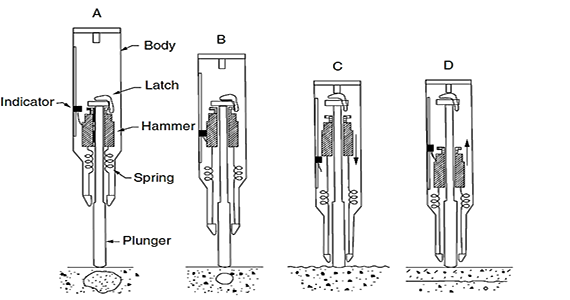
Brief Overview Of Rebound Hammer Test

It is also called as surface hardness test or Schmidt test. It refers to a surface hardness tester that contains less distinct theoretical connection amid the strength of concrete and the rebound number of the hammer. But, in some specific restrictions, empirical correlations are set among compressive strength and the rebound number. Usually, most investigators discover that the perfectness of the rebound hammer lies between 60 and 70 percent. Coefficients of variation against compressive strength for the diversified specimens are averaged with 25%. The considerable variations in strength is restricted with the exact calibration of the hammer.
As per general rule, the exactness of computation concerning compressive strength of test specimens cast are allowed and verified under laboratory conditions through a perfectly calibrated hammer remains amid ?15 and ?20% . However, the presumptive correctness for forecasting the concrete strength in a structure is ?25%.
Under this process, if it is required to make the instrument ready for a test, discharge the plunger from its locked position by exerting the plunger against the concrete and gradually moving the body afar from the concrete. It will result in outspreading the plunger from the body and the latch involves the hammer mass to the plunger rod. Keep the plunger upright to the concrete surface and gradually move the body toward the test object. When the body is moved, the main spring attaching the hammer mass to the body is extended (Figure B). As soon as the body is moved to the limit, the latch is discharged automatically, and the preserved energy stored in the spring accelerates the hammer.
For information, visit


